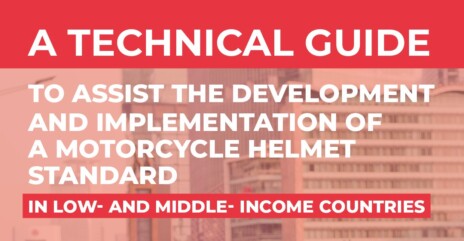More rewards for speeding than not: Addressing road safety in Kenya
When the Road Safety in 10 Countries team went to Nairobi this past December, they discovered more than just a bustling metropolitan city. Working closely with the Kenya Red Cross, they carried out a workshop – focusing on helmet wearing and speeding – which revealed some new approaches as well as interesting challenges to road safety.
The key strengths of the Kenya Red Cross – specifically their access to local communities and well-established reputation – were central in bringing together over 40 participants from the Ministries of Health, Transport, Public Health, as well as surgeons, non-governmental organizations and traffic police.
“One of the real highlights was seeing for the first time, a multi-sector approach to address road trauma issues,” stated Gayle DiPietro, Global Manager for Road Safety in 10 Countries. “Usually there is a specific focus such as health and trauma care, but we worked hard to shift the thinking and activity along the continuum – to prevent rather than respond to road trauma.
By bringing together key Kenyan road safety stakeholders, the workshop provided participants with new perspectives on the specific risks associated with speeding and head injury as well as techniques for managing these risk factors in a challenging road safety environment.
At the same time, some of the key obstacles to road safety in Kenya were revealed. Participants spoke about the cultural barrier of helmet wearing for women because of their elaborate hairstyles, as well as the reality that fines for speeding and not wearing a helmet are financially insignificant – less than 1 USD.
The other challenging reality for road safety: a motorcycle act was passed in 2009, yet never adopted or printed, so magistrates and courts are not obliged to follow it, making enforcement a point of frustration for traffic police.
Regardless of these challenges, the enthusiasm of workshop participants demonstrate a willingness to cooperate on projects that build the capacity of local institutions and reduce road crashes by working to managing the riskiest road behaviours.
Related news






